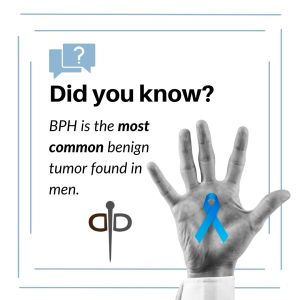How does a Prostate Artery Embolization work?

Age-related health conditions are often inevitable, especially in men over the age of 50. Benign Prostatic Hyperplasia (BPH), for example, is seen in about 50% of men over 50-years-old and up to 90% of men over 80-years-old. Also referred to as enlarged prostate, BPH occurs when, as the name suggests, the prostate and its surrounding tissue expand. As the gland expands, it can squeeze the urethra and thicken the walls of the bladder. The bladder will weaken, and eventually lose its ability to empty fully. Benign Prostatic Hyperplasia is not cancerous, nor does it cause cancer. In fact, some men may never need to treat their condition. However, in other cases, BPH can cause severe discomfort, such as difficult urination and frequent UTI’s.
Treatment can help to alleviate these symptoms. At Pedes Orange County, we offer prostate artery embolization as a treatment method for BPH. How does a Prostate Artery Embolization work? If you would like to learn more about how PAE is performed at Pedes Orange County, keep reading!
What is PAE?
Prostate artery embolization, or PAE, is a minimally invasive treatment method for benign prostatic hyperplasia. An ideal candidate for Prostate Artery Embolization is either ineligible or does not want to have surgery. You do not need to stay in the hospital after PAE as it is an outpatient procedure. Additionally, you will not need general anesthesia because any pain experienced is mild and well tolerated. You will, however, receive IV medication to help you feel relaxed. An Interventional Radiologist will perform this procedure. Using imaging techniques such as X-rays and ultrasounds, Interventional Radiologists can treat conditions inside of the body without using invasive surgical methods.
How does a Prostate Artery Embolization work?
To begin, an Interventional Radiologist makes a small incision near your wrist or groin. Then, they will guide a catheter (a small, thin tube) through the blood vessel that supplies blood to your prostate. The interventional radiologist will then perform an arteriogram after the catheter is in place. During the arteriogram, the interventional radiologist will inject a contrast dye to create a map of the blood vessels around your prostate. Once the Interventional Radiologist has mapped out your blood vessels, they can begin to redirect the blood flow around your prostate gland. Tiny, biologically compatible beads travel through the catheter and into the blood vessels. These beads reduce prostatic blood flow, thus allowing it to shrink back to a normal size.
What happens after the procedure?
Unlike other, more aggressive treatment options for BPH, PAE does not require a hospital stay. The medical staff will send you home the same day as the procedure is completed. It takes about one week to recover from a PAE procedure. Your symptoms will start to dissipate and recovery is initiated as the pressure and discomfort is alleviated from your once enlarged prostate. Studies have shown that the results of a PAE procedure last anywhere from 3-4 years.
What are the benefits?
Prostate Artery Embolization has many benefits when compared to other forms of treatment. A Prostate Artery Embolization eliminates the need for major surgery. Therefore, if you are not a candidate for or do not wish to have major surgery, a PAE procedure may be best for you. Additionally, PAE does not impact sexual function. Patients who receive PAE as a treatment method for Benign Prostatic Hyperplasia (BPH) experience have reported symptomatic relief up to 90% of the time. Unlike a Transurethral resection of the prostate (TURP), which may take up to a month to recover from, a Prostate Artery Embolization only takes one week to recover from.
Prostate Artery Embolization at Pedes Orange County
Candidates for a Prostate Artery Embolization have either exhausted other methods of treatment or simply do not want to undergo major surgery. PAE is a minimally invasive alternative that not only relieves the uncomfortable symptoms associated with Benign Prostatic Hyperplasia, but also upholds a high success rate without impacting your sexual function. If you would like to learn more about our facility and how our minimally invasive procedures might benefit you, call our office to schedule a consultation today!













